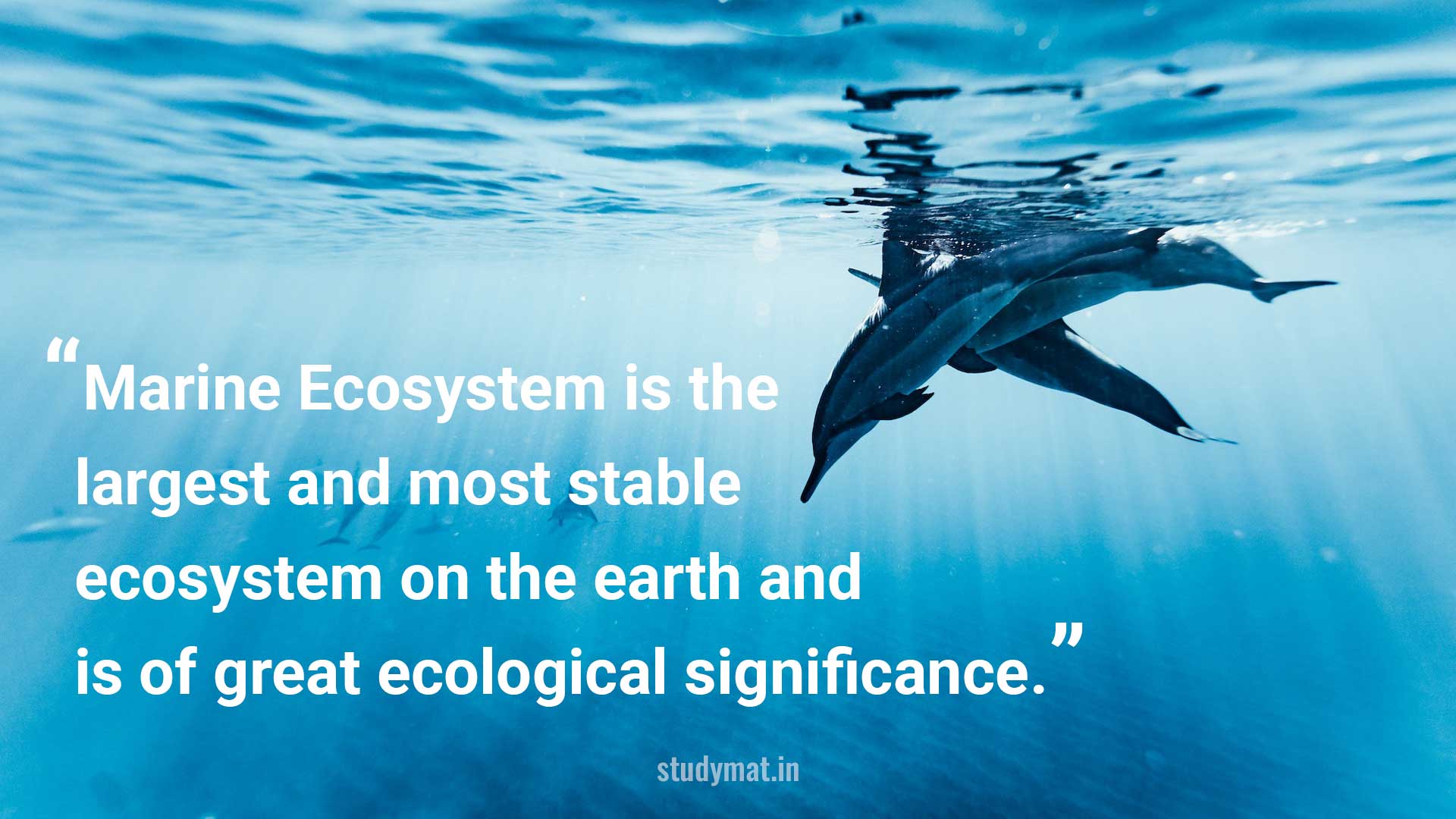In this article, we will elaborate on the statement,
Marine Ecosystem is the largest and most stable ecosystem on the earth and is of great ecological significance.
Marine Ecosystem is the largest and most stable ecosystem on the earth and is of great ecological significance. The sea water is salty with an average of 3.5%. Sodium chloride (NaCl) is 27% of the salt while the other important minerals are calcium, potassium and magnesium. Light and Temperature are key factors that affect marine life. The Temperature of ocean water stays quite consistent, ranging from (2ºC in polar regions) very cold to (32ºC or more) very warm in the tropics.
The Marine Habitat can be divided into two main zones: (i) Benthic Zone, which is the ocean floor, and (ii) Pelagic Zone, which is the open water.
Biota of Oceans:
Life in the sea is a lot of diversity in marine life, with many different kinds of animals and algae. However, there aren’t as many animals in the ocean compared to other habitats on land. Marine Ecosystems are divided into different zones based on depth, such as the Littoral, Neritic, Pelagic, and Benthic zones.
i) Biota of Littoral Zone:
This is the area along the shore that gets hit by waves and tides. It’s a tough place to live because of the changing conditions like water levels and temperature. We’ll find a few plants here, along with animals like snails, clams, and sea urchins. These animals are adapted to survive different levels of exposure to air and water.
Read Also:
Explain the Significance of Kul and Bamboo Drip Irrigation Practices.
Explain an Indirect Use Value of Biodiversity.
“Species Diversity is the most visible component of Biodiversity.” Explain.
Differentiate between Food Chain and Food Web.
ii) Biota of Neritic Oceanic Zone:
This is a shallow, coastal area that’s home to lots of different species. The water here is rich in nutrients and sunlight, making it a productive environment for plants and animals. We’ll find phytoplanktons like dinoflagellates and diatoms, as well as many types of fish, whales, seals, and other marine creatures.
iii) Biota of Pelagic Zone:
This is the open water of the ocean, covering most of its surface. It’s not as rich in species as the coastal areas, but you’ll still find phytoplanktons and zooplanktons here. Other animals, like sea cucumbers and sea urchins, crawl along the ocean floor and serve as food for predators like brittle stars and crabs.
iv) Biota of Benthic Zone:
This is the bottom of the ocean, where organisms live in or on the seabed. These organisms get their food from the surrounding water or from the sediment on the ocean floor. Some rooted animals, like sea lilies and sponges, stay in one place, while others, like starfish and sea urchins, move around to find food.
Related Search:
FAQ:
- Why is marine ecosystem most stable?
- Is the marine ecosystem the largest ecosystem on Earth?
- Are marine ecosystems the biggest ecosystems they cover around of Earth’s surface?
Follow us:
If you like this article, you can Follow us on Facebook.
Also, you can Join our Official Facebook Group for QnA Sessions and Discussions with the worldwide IGNOU community.

